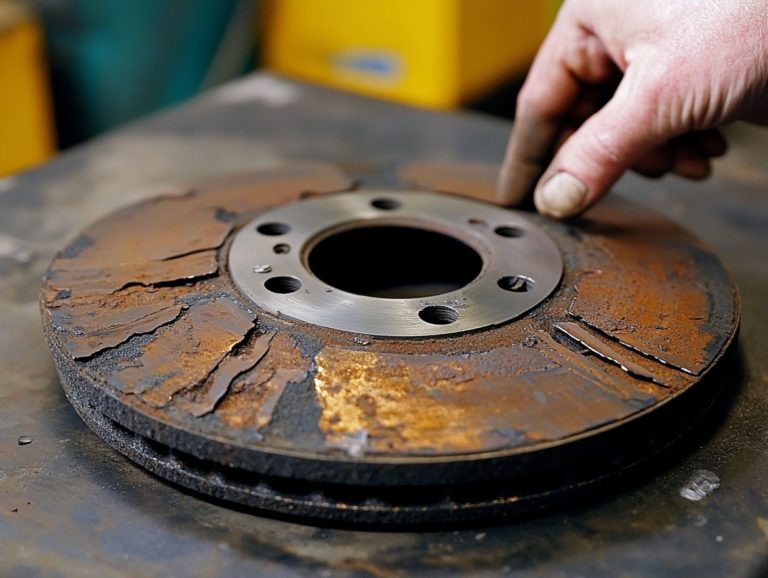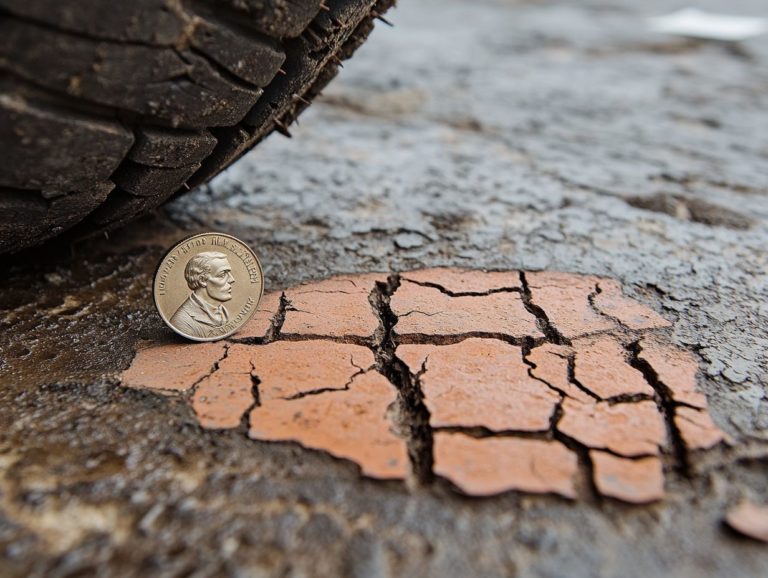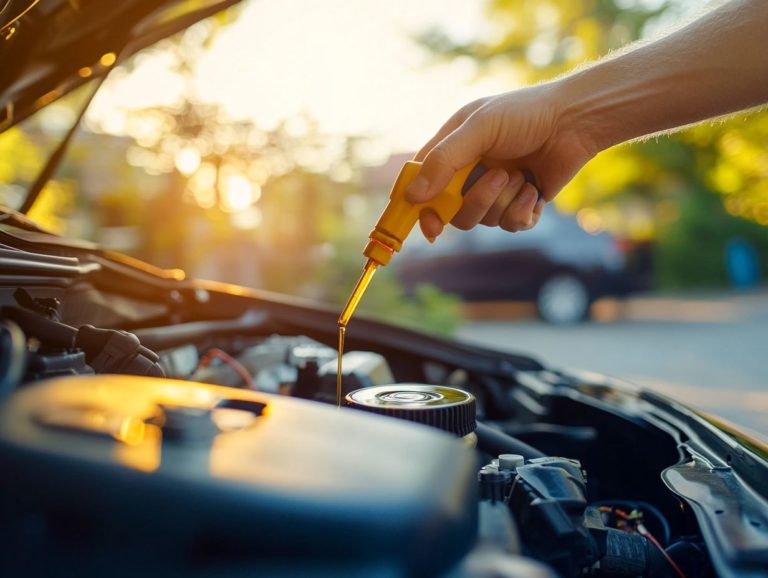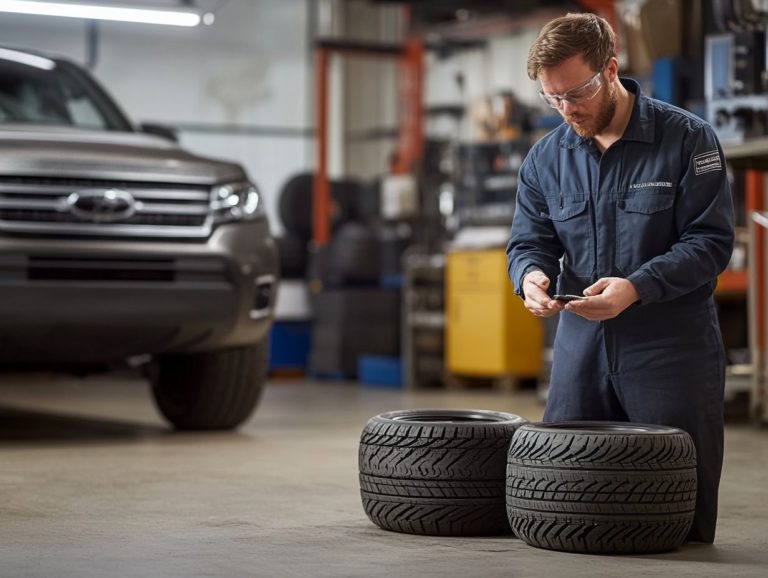What Are the Steps for Jump-Starting a Car?
A dead car battery can certainly disrupt your day, leaving you stranded and feeling quite exasperated. Knowing when and why to jump-start your car is essential for all vehicle owners. A jump-start is usually needed when your battery is dead, which can occur from leaving the lights on or due to extreme weather.
Understanding how to jump-start your vehicle can save you precious time and hassle. This guide provides everything you need to successfully jump-start your car, including the essential tools and step-by-step instructions to follow.
It also highlights common pitfalls to avoid, ensuring a smoother experience and outlines what to do once your car is back in action. Are you ready to hit the road again? Let s delve into the details!
Contents
Key Takeaways:
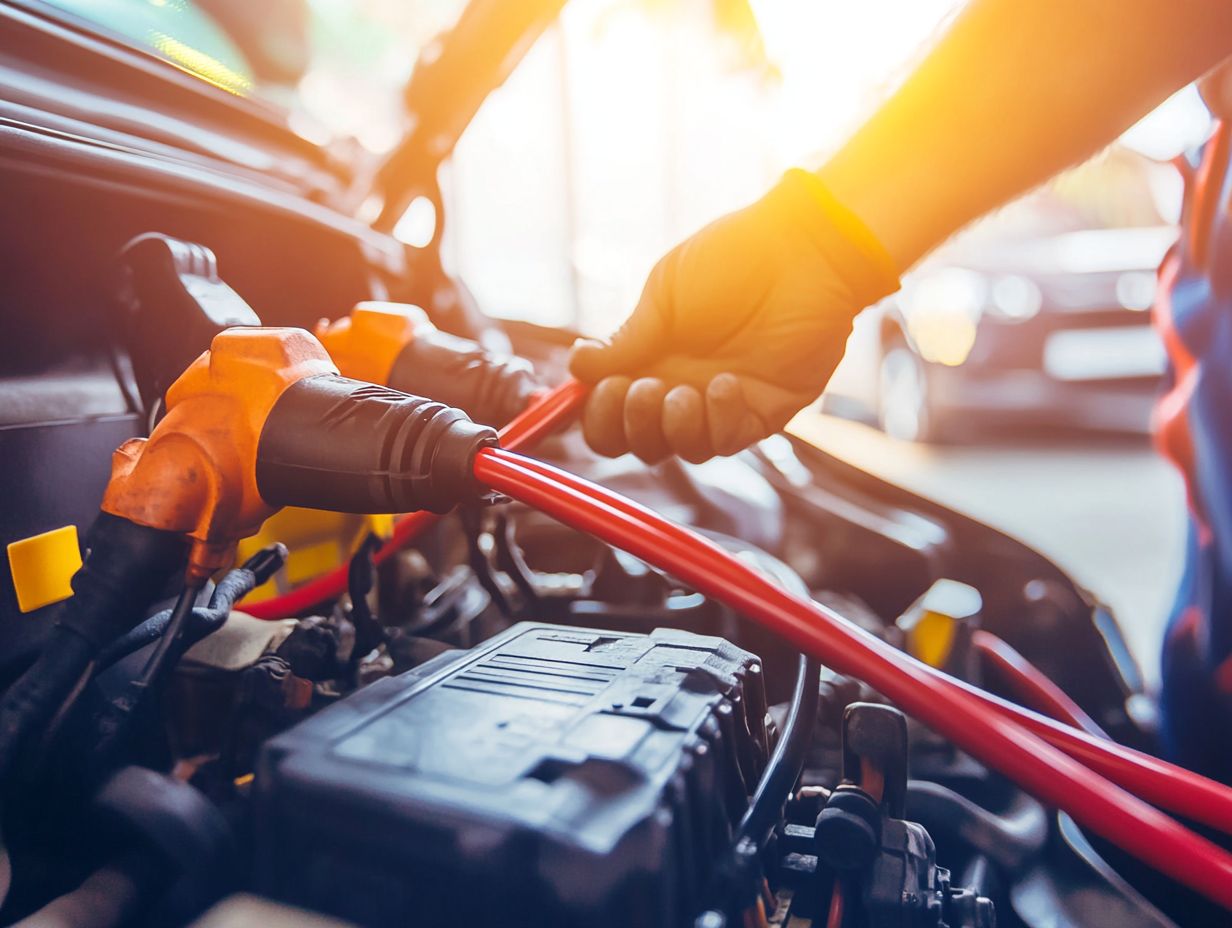
- Always have the necessary supplies on hand and know when to jump-start a car to avoid being stranded on the road.
- Follow the step-by-step guide carefully to safely and effectively jump-start your car and get back on the road.
- Take precautionary measures, avoid common mistakes, and follow up with proper maintenance to prevent future issues.
Why and When to Jump-Start a Car
It s essential to recognize when to seek professional help, especially if you find yourself frequently battling battery issues. This could signal potential underlying problems within your car’s electrical system.
For instance, if you often make short trips, your battery might drain more quickly since the alternator may not have sufficient time to recharge it completely. Neglecting routine battery inspections can lead to unnoticed corrosion or wear, further compounding battery failure.
Develop proactive habits, like periodically checking your battery connections. Stay alert to signs such as dimming headlights or slow engine cranking; these can indicate declining battery health.
Stay alert to these signs! Keeping your car in top shape means fewer breakdowns and more adventures on the road.
Supplies Needed for Jump-Starting a Car
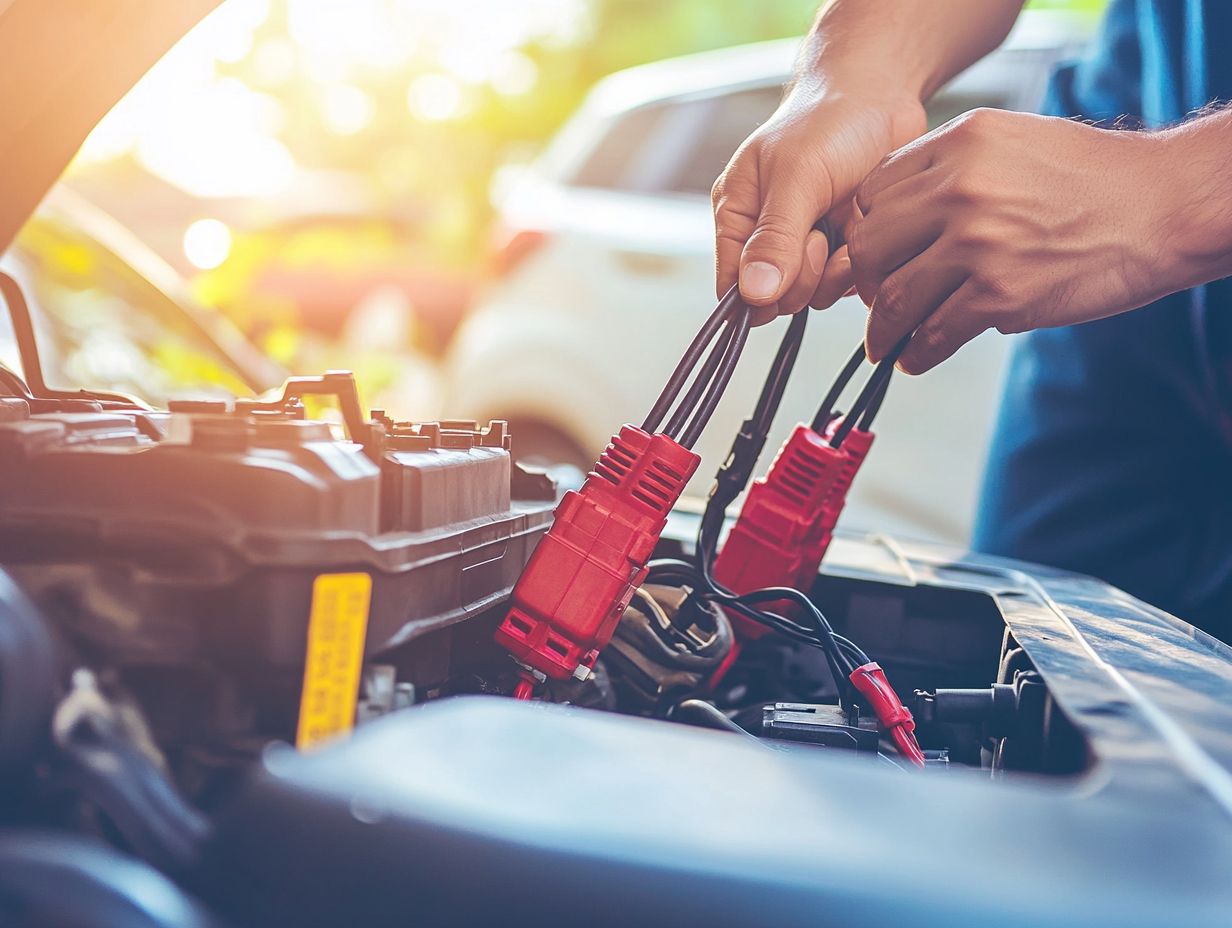
To successfully jump-start your car, it s crucial to have the right supplies at your disposal. This includes high-quality jumper cables and, if necessary, a battery pack. Jumper cables are essential for connecting to a functional vehicle’s battery, while a battery pack can serve as a reliable alternative power source, particularly in emergencies.
Regular car maintenance helps you avoid unexpected dead battery situations.
Essential Tools and Equipment
When gearing up for a jump-start, having the right tools and equipment is essential for both safety and effectiveness. The star of the show? A solid set of jumper cables that enable you to connect your car battery to a functioning vehicle. And let s not overlook a reliable battery pack; it can truly be a lifesaver in emergencies, allowing you to start your vehicle without needing help from another car.
Consider wearing a pair of safety goggles to protect your eyes from any wayward battery acid splashes or sparks that might fly during the process. Keeping gloves handy is also a smart move; they not only enhance your grip but also shield your hands from any contaminants.
Understanding battery safety protocols is crucial. Ensuring that the terminals are clean and correctly identified can help you avoid dangerous mishaps. Always connect the positive cable to the positive terminal first, followed by the negative this little detail is key to maintaining a safe procedure.
Lastly, having a flashlight on hand is a game-changer for visibility, especially if your jump-starting adventure takes place in low light conditions.
Get ready to jump-start your journey let s hit the road safely!
Step-by-Step Guide for Jump-Starting a Car
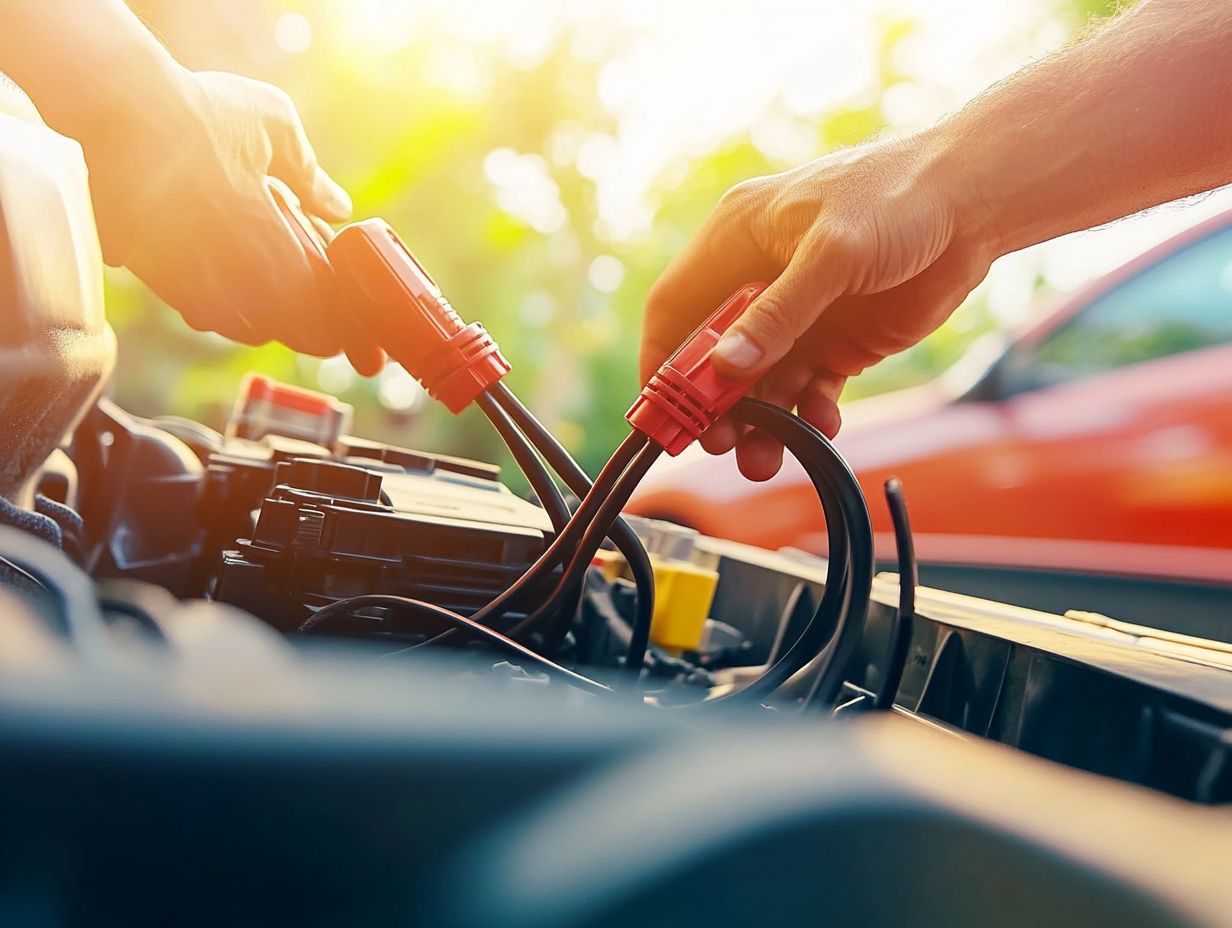
A comprehensive step-by-step guide is essential for successfully jump-starting your car, guaranteeing both safety and efficiency throughout the process. Begin with a meticulous vehicle inspection to identify the dead battery and verify the condition of your jumper cables before connecting them to the correct terminals.
Adhering to a structured jump-start procedure not only minimizes safety hazards but also ensures that your vehicle is primed and ready to start without a hitch.
Instructions for Safe and Effective Jump-Start
Executing a jump-start safely requires following specific instructions designed to minimize hazards while ensuring an effective process. Start by connecting the jumper cables in the correct order positive to positive and negative to negative before attempting to start your vehicle. Once the jump is successful, make sure to remove the cables properly to avoid any accidents.
Before you use the cables, take a moment to inspect them for any frays or damage. Compromised cables can present significant risks, including electrical shock or fire. When connecting the cables, ensure that each clamp is securely attached and that they don’t touch any metal surfaces to reduce the risk of sparks.
Always perform the jump-start in a well-ventilated area to prevent the buildup of harmful gases, especially if you’re dealing with a battery that could leak.
By following these guidelines, you not only ensure a successful jump-start but also protect everyone involved from unnecessary hazards. This underscores the importance of meticulous emergency assistance procedures.
Tips and Tricks for Successful Jump-Starting
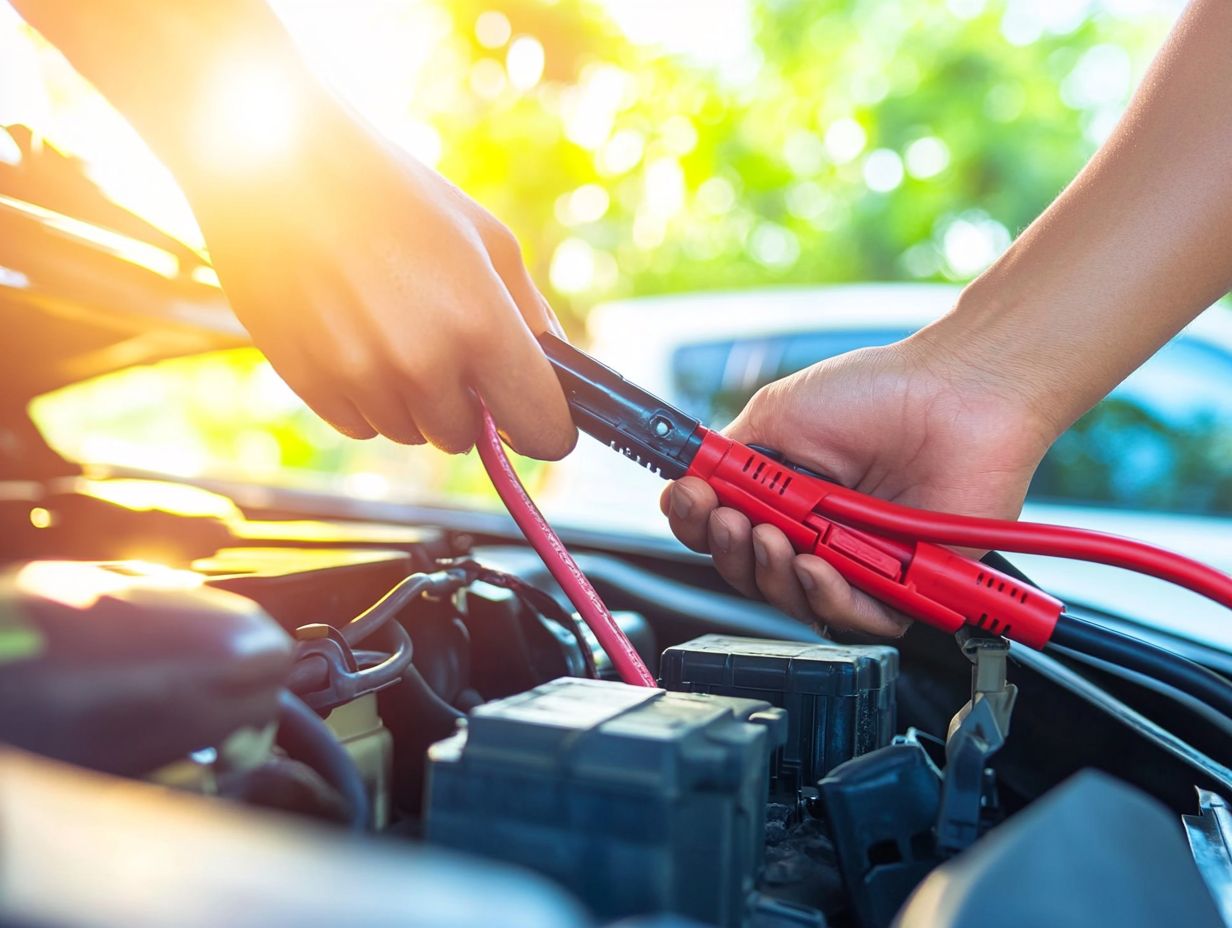
To ensure a successful jump-start, it’s essential for you to grasp valuable tips and tricks while also being aware of common pitfalls to avoid. Regularly charging and maintaining your battery will help you steer clear of those unexpected dead battery scenarios.
Knowing when to schedule a visit with a mechanic is crucial for addressing any underlying battery issues that may arise. Furthermore, being attentive to the importance of driving for a recharge after a jump-start can significantly enhance your battery’s longevity.
Common Mistakes to Avoid
Avoiding common mistakes during the jump-starting process can truly make the difference between a quick fix and more extensive car battery issues. One major pitfall is improperly connecting jumper cables, which can lead to safety hazards or even damage your vehicle’s electrical systems. Always ensure you follow the correct jump-starting procedure to prevent complications.
Many people overlook the importance of safety checks, such as making sure both vehicles are turned off before making any connections. Skipping this crucial step can result in electrical surges that may harm sensitive components.
To avoid this, take a moment to double-check that both cars are in park or neutral and that all electrical accessories are turned off. It s also essential to inspect the battery for any cracks or leaks, as these can pose serious risks.
Proper inspection not only safeguards you against accidents but also extends the life of the battery. By adhering to these guidelines, you can ensure a smoother and safer jump-start experience.
What to Do After Jump-Starting a Car
After you ve successfully jump-started your car, understanding the next steps is crucial to keeping your vehicle in top shape.
It s important to keep an eye on the battery post-jump to assess whether it requires charging or a full replacement. Moreover, driving a considerable distance can effectively recharge the battery, so think about scheduling regular car service to ensure ongoing maintenance.
Next Steps and Maintenance Tips
After a jump-start, follow these steps to keep your vehicle running smoothly and efficiently.
Regularly inspect your battery. This can help you spot issues like corrosion or loose connections early on.
Don’t ignore these problems! They can grow into bigger issues if left unchecked.
Drive your vehicle for a while after a jump-start. This allows the battery to recharge effectively.
Make sure to have a mechanic check your battery and wiring. This ensures everything is working safely and efficiently.
Taking care of your battery enhances its life and boosts your vehicle’s overall performance.

